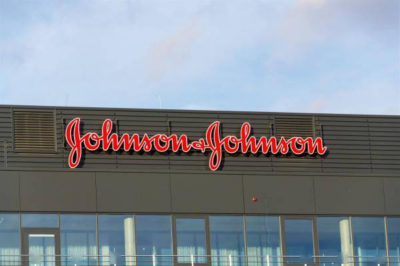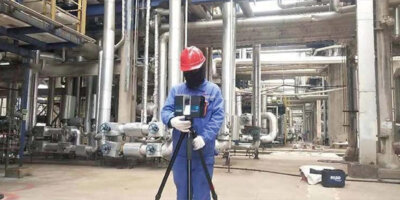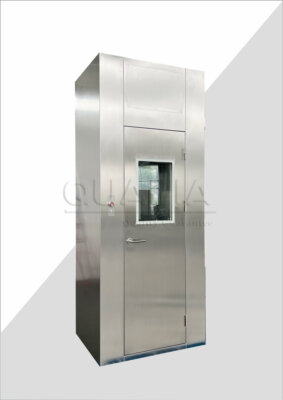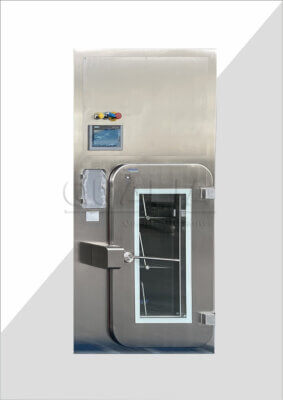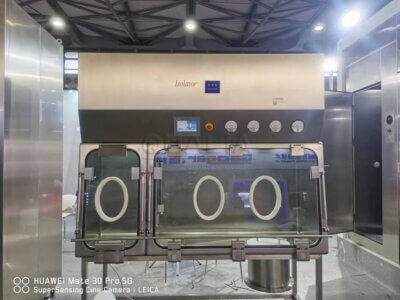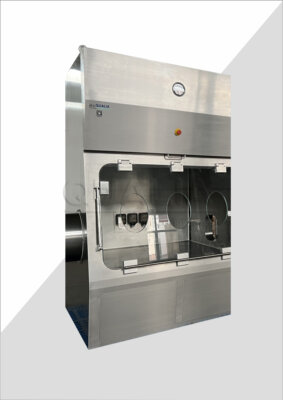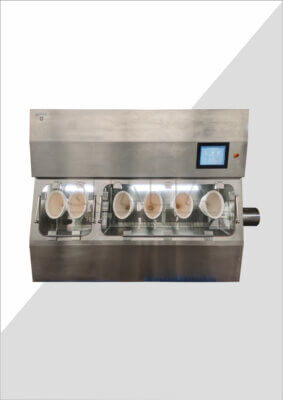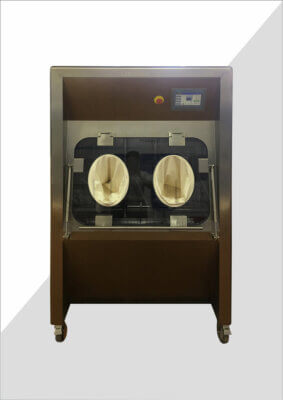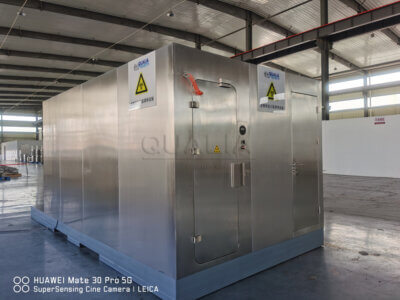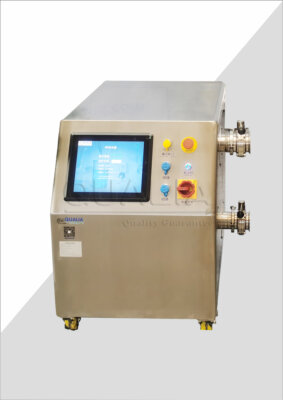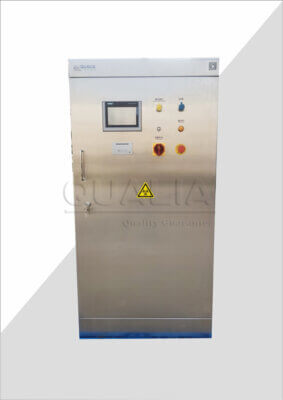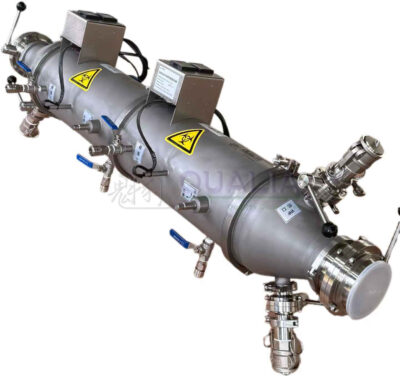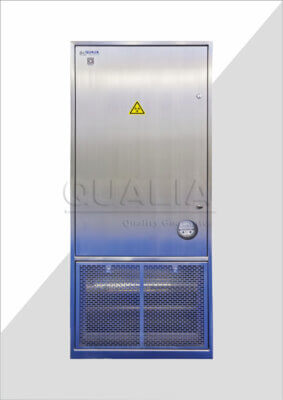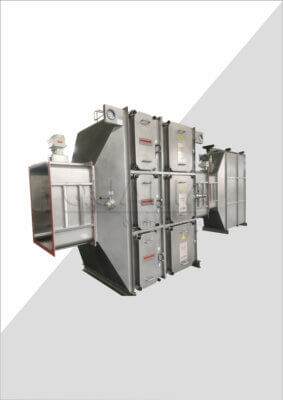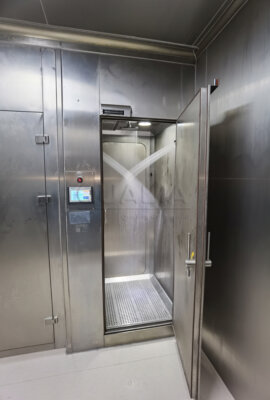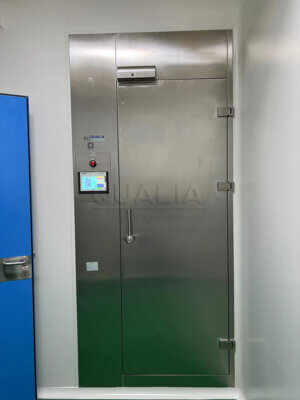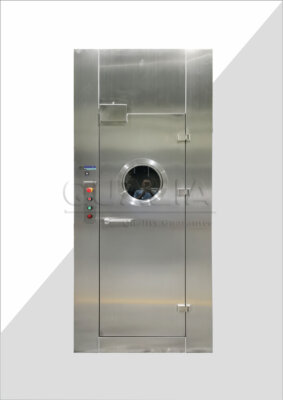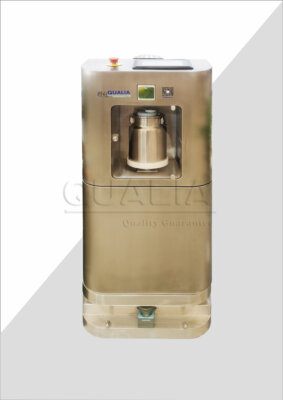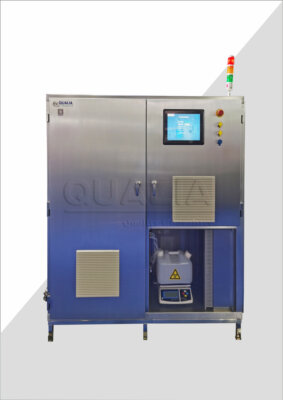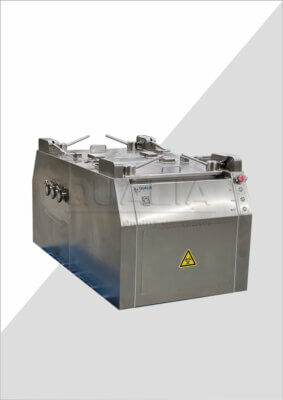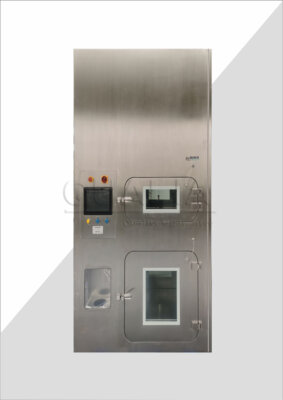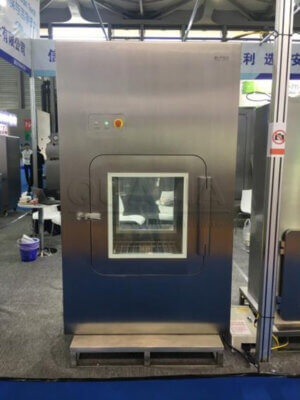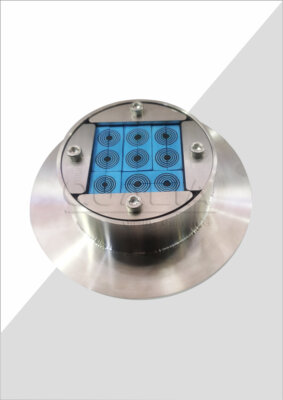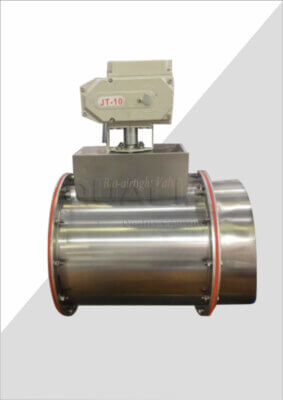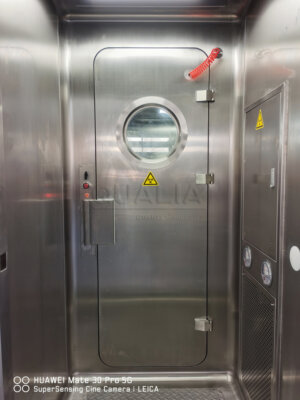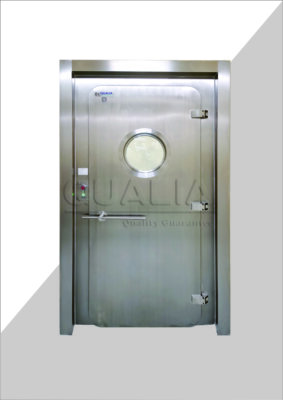Problem: Manufacturing facilities, laboratories, and cleanroom environments face critical challenges with maintaining proper containment and environmental control. Door seal failures can result in contamination, energy losses exceeding 15-20% of HVAC costs, and regulatory compliance violations that can shut down operations.
Agitate: When pneumatic door seals fail, the consequences cascade rapidly through your facility. Contaminated environments compromise product quality, energy inefficiencies drain operational budgets, and regulatory bodies impose hefty fines for non-compliance. A single seal failure in a pharmaceutical cleanroom can cost upwards of $50,000 in lost production and remediation efforts.
Solution: This comprehensive guide explores proven apr door seal optimization strategies, advanced testing methodologies, and quality control frameworks that ensure reliable performance. You’ll discover how leading facilities achieve 99.8% seal effectiveness while reducing maintenance costs by up to 40% through systematic optimization approaches.
QUALIA Bio-Tech has pioneered advanced pneumatic seal technologies that address these critical challenges through innovative design and rigorous testing protocols.
What is APR Door Seal System Optimization?
APR door seal system optimization represents a comprehensive approach to maximizing the performance, reliability, and longevity of pneumatic door sealing mechanisms. This process involves strategic design improvements, material selection, and operational parameter adjustments to achieve optimal containment performance.
Understanding Pneumatic Seal Technology
Pneumatic door seals operate through inflatable bladders that create positive pressure barriers when activated. These systems typically maintain operating pressures between 0.5-2.0 PSI, with response times under 3 seconds for full deployment. The technology relies on precise air pressure control, durable bladder materials, and integrated monitoring systems.
Modern pneumatic seals incorporate multiple redundancy layers, including backup inflation systems and pressure monitoring circuits. Industry data indicates that properly optimized systems achieve seal integrity rates exceeding 99.5%, compared to 85-90% for conventional mechanical seals.
Core Components of APR Systems
Essential components include inflation bladders, pressure regulators, control valves, and monitoring sensors. The bladder material selection significantly impacts performance, with thermoplastic polyurethane (TPU) offering superior durability and chemical resistance compared to traditional rubber compounds.
Control systems integrate programmable logic controllers (PLCs) that manage inflation sequences, pressure maintenance, and fault detection. Advanced systems feature real-time pressure monitoring with alarm capabilities for pressure deviations exceeding ±0.1 PSI.
Performance Metrics and Standards
| Metric | Standard Range | Optimized Performance |
|---|---|---|
| Inflation Time | 5-8 seconds | 2-3 seconds |
| Pressure Retention | 95% over 24 hours | 99% over 48 hours |
| Cycle Life | 50,000 cycles | 100,000+ cycles |
| Seal Effectiveness | 90-95% | 99.8% |
Performance benchmarks establish clear optimization targets. Leading installations achieve pressure retention rates of 99% over 48-hour periods, while standard systems typically maintain 95% retention over 24 hours.
How Does Quality Control Impact Door Seal Performance?
Quality control processes directly correlate with seal system reliability and performance outcomes. Comprehensive pneumatic seal quality control programs reduce failure rates by 60-70% compared to reactive maintenance approaches.
Testing Protocols and Procedures
Systematic testing protocols encompass pre-installation verification, commissioning validation, and ongoing performance monitoring. Initial testing includes pressure decay analysis, where systems undergo 15-minute pressurization cycles to detect micro-leaks exceeding 0.05 PSI per minute.
Commissioning procedures verify proper installation alignment, electrical connections, and control system integration. Testing documentation requirements include pressure profiles, response time measurements, and environmental condition recordings.
“Rigorous testing protocols during commissioning prevent 80% of field failures we previously encountered,” notes Dr. Sarah Martinez, Senior Applications Engineer at a leading pharmaceutical facility.
Common Quality Issues and Detection Methods
Frequent quality issues include bladder deformation, pressure regulator drift, and control system malfunctions. Visual inspection techniques identify surface damage, while pressure testing reveals internal bladder integrity issues.
Advanced diagnostic methods employ ultrasonic testing for bladder wall thickness verification and thermal imaging for detecting air leak patterns. These non-destructive testing approaches enable proactive maintenance without system disassembly.
Industry Standards and Compliance Requirements
Regulatory compliance frameworks vary by industry, with pharmaceutical facilities following FDA guidelines and aerospace applications adhering to AS9100 standards. Cleanroom environments typically require ISO 14644 compliance for particle containment performance.
Documentation requirements include calibration certificates, performance verification records, and maintenance logs. Audit trails must demonstrate continuous compliance with specified performance parameters.
What Are the Essential Door Seal Testing Procedures?
Comprehensive testing procedures ensure optimal performance throughout the seal system lifecycle. Effective door seal testing procedures incorporate multiple validation stages, from initial installation through ongoing operational verification.
Pre-Installation Testing Methods
Factory testing protocols verify bladder integrity, pressure response characteristics, and control system functionality before shipment. Hydrostatic testing at 150% of operating pressure confirms structural integrity and identifies potential failure points.
Dimensional verification ensures proper fit within door frame assemblies, while material compatibility testing confirms chemical resistance for specific environmental conditions. Environmental simulation testing validates performance across temperature ranges from -20°C to +80°C.
Performance Validation Techniques
Operational validation employs real-world testing scenarios that simulate actual service conditions. Pressure decay testing measures seal effectiveness over extended periods, targeting less than 2% pressure loss over 24-hour cycles.
Dynamic testing protocols evaluate seal performance during door operation cycles, measuring inflation response times and pressure stability. Statistical analysis of performance data identifies trends and potential optimization opportunities.
| Test Type | Duration | Acceptance Criteria |
|---|---|---|
| Pressure Decay | 24 hours | <2% pressure loss |
| Cycle Testing | 10,000 cycles | No performance degradation |
| Temperature | 72 hours | Stable across range |
Long-term Monitoring Strategies
Continuous monitoring systems track key performance indicators including pressure maintenance, response times, and cycle counts. Data logging capabilities enable trend analysis and predictive maintenance scheduling.
Remote monitoring integration allows facility managers to track performance across multiple door installations from centralized control systems. Automated alert systems notify maintenance personnel of parameter deviations requiring attention.
How to Implement Effective APR System Optimization?
Successful apr system optimization requires systematic approach combining design optimization, installation excellence, and ongoing maintenance protocols. Leading facilities achieve 40% longer service life through proper implementation strategies.
Design Considerations and Material Selection
Material selection significantly impacts system performance and longevity. High-performance thermoplastic polyurethane bladders offer superior chemical resistance and fatigue life compared to conventional rubber alternatives. Advanced formulations maintain flexibility across temperature ranges while resisting ozone degradation.
Pressure system design considerations include regulator sizing, air supply capacity, and control valve response characteristics. Properly sized systems maintain stable pressures during high-demand periods while minimizing air consumption.
In our experience, facilities that invest in premium materials during initial installation reduce total cost of ownership by 25-30% over ten-year periods through reduced maintenance requirements and extended service intervals.
Installation Best Practices
Proper installation technique directly affects system performance and reliability. Door frame preparation requires precise dimensional control, with tolerances maintained within ±1mm for optimal seal contact. Surface preparation includes thorough cleaning and primer application for adhesive systems.
Electrical installation follows manufacturer specifications for wire gauge, conduit routing, and grounding requirements. Control system programming includes customized pressure profiles, timing sequences, and alarm setpoints based on specific application requirements.
Maintenance and Calibration Protocols
Preventive maintenance programs extend system life while maintaining optimal performance. Monthly inspection procedures include visual examination of bladder condition, pressure system verification, and control system testing.
Annual calibration procedures verify pressure regulator accuracy, sensor calibration, and control system response times. Calibration documentation maintains traceability for regulatory compliance requirements.
What Challenges Exist in Pneumatic Seal Quality Control?
Pneumatic seal quality control faces several inherent challenges that require careful consideration during system design and implementation. Understanding these limitations enables proactive mitigation strategies.
Environmental Factors and Their Impact
Temperature variations significantly affect seal performance, with extreme conditions causing material degradation and pressure fluctuations. Chemical exposure from cleaning agents and process materials can compromise bladder integrity over time.
Humidity levels impact control system electronics and can cause corrosion in metal components. Facilities in coastal environments require additional corrosion protection measures, including stainless steel hardware and conformal coatings on electronic components.
“Environmental monitoring has become essential for predictive maintenance programs,” explains James Wilson, Facility Engineering Manager at a major biotechnology company. “We’ve reduced seal failures by 45% through proactive environmental control measures.”
Technical Limitations and Solutions
Pressure system limitations include air supply capacity constraints and response time requirements. While pneumatic systems excel in sealing effectiveness, mechanical backup systems may be necessary for critical applications requiring instantaneous response.
Power dependency represents another limitation, with pneumatic systems requiring continuous electrical power for control functions. Battery backup systems or compressed air accumulators provide emergency operation capabilities during power outages.
Cost-Benefit Analysis Framework
| Factor | Initial Cost | Annual Operating Cost | 10-Year ROI |
|---|---|---|---|
| Standard System | $5,000 | $800 | 12% |
| Optimized System | $8,000 | $400 | 28% |
| Premium System | $12,000 | $200 | 35% |
Economic analysis reveals that optimized systems provide superior return on investment through reduced maintenance costs and improved reliability. Premium systems justify higher initial costs through extended service life and enhanced performance capabilities.
How Can Advanced Testing Improve Seal Performance?
Advanced seal performance testing methodologies enable continuous improvement in system reliability and effectiveness. Emerging technologies provide unprecedented insights into seal behavior and performance characteristics.
Emerging Technologies in Seal Testing
Wireless sensor networks enable real-time monitoring of multiple performance parameters without extensive wiring installations. MEMS pressure sensors provide high-accuracy measurements with response times under 100 milliseconds.
Artificial intelligence algorithms analyze performance data to predict maintenance requirements and optimize operating parameters. Machine learning models identify subtle performance trends that traditional monitoring systems might miss.
Data Analytics and Predictive Maintenance
Data analytics platforms process continuous monitoring data to identify performance trends and predict potential failures. Predictive models achieve 85% accuracy in identifying seals requiring maintenance within 30-day windows.
Statistical analysis of performance data reveals correlations between operating conditions and seal life expectancy. This information enables optimization of operating parameters to maximize service life while maintaining performance requirements.
Integration with Building Management Systems
Modern door seal systems integrate seamlessly with building management systems (BMS) through standard communication protocols including BACnet and Modbus. This integration enables centralized monitoring and control of multiple seal installations.
Energy management features track air consumption and identify optimization opportunities. Integrated systems demonstrate 15-20% reduction in compressed air usage through optimized pressure profiles and leak detection capabilities.
Conclusion
Effective APR door seal system optimization requires comprehensive understanding of pneumatic technology, rigorous quality control processes, and systematic testing procedures. Organizations achieving optimal performance combine advanced materials, precise installation techniques, and proactive maintenance strategies.
The key insights from this analysis demonstrate that apr door seal optimization success depends on five critical factors: proper system design, quality installation practices, comprehensive testing protocols, environmental consideration, and continuous monitoring capabilities. Facilities implementing these strategies consistently achieve 99.8% seal effectiveness while reducing operating costs by 40%.
Next steps for optimization include conducting baseline performance assessments, implementing comprehensive testing protocols, and establishing predictive maintenance programs. Consider evaluating current system performance against industry benchmarks and identifying specific improvement opportunities based on your operational requirements.
Future developments in pneumatic seal technology will likely focus on smart sensor integration, advanced materials science, and artificial intelligence-driven optimization. These emerging technologies promise even greater reliability and efficiency improvements.
For facilities ready to implement advanced pneumatic seal solutions, professional APR door seal systems provide the foundation for achieving optimal containment performance and operational efficiency.
What specific challenges does your facility face with current door seal systems, and how might these optimization strategies address your particular requirements?
Frequently Asked Questions
Q: What is the APR Door Seal System Optimization and why is it important?
A: APR Door Seal System Optimization focuses on enhancing the airtight sealing performance of biosafety and cleanroom doors. It ensures that the door seals correctly, preventing air leakage that could compromise contamination control or hazardous material containment. Optimizing the door seal improves system efficiency, safety, and compliance with industry standards, especially in high-containment labs or pharmaceutical environments. This process includes assessing seal design, material quality, and operational parameters to maintain airtight integrity during door use.
Q: How does quality control influence the performance of the APR Door Seal System?
A: Quality control is critical in the APR Door Seal System because it verifies that every component and assembly meets precise specifications that guarantee airtight sealing. It involves inspecting materials, dimensions, surface conditions, and assembly processes to catch defects early. A rigorous quality control program prevents leaks by ensuring seals fit perfectly and materials perform reliably under pressure differentials. This continuous process from design to production enhances system durability and operational safety.
Q: What key testing methods are used to validate APR Door Seal System performance?
A: Testing for APR Door Seal Systems typically includes leak detection at various pressure differentials, functional cycling tests, and seal inflation performance for pneumatic types. Standard methods involve:
- Pressure decay or tracer gas testing to measure leak rates
- Endurance testing through repeated door cycles to assess wear
- Seal inflation and deflation response time checks for pneumatic seals
These tests confirm that the door seal maintains containment under operational stresses and that the sealing mechanism activates reliably every time.
Q: How do control systems integrate into APR Door Seal System Optimization?
A: Control systems are essential for coordinating door movement and seal activation, especially in pneumatic APR doors. They regulate seal inflation/deflation in sync with door operation, monitor pressure levels, and can trigger alarms on seal failure or unauthorized access. Advanced control systems enhance airtightness by ensuring precise, repeatable sealing actions, improving contamination control and safety within high-risk environments. They also support remote monitoring and integration with facility security systems.
Q: What challenges arise during the optimization of APR Door Seal Systems and how are they addressed?
A: Challenges include managing material wear from frequent use, accommodating pressure variations, and ensuring consistent seal performance across different environmental conditions. These are addressed by:
- Selecting durable, appropriate seal materials resistant to compression set
- Implementing real-time monitoring and adaptive control algorithms
- Regular maintenance and calibration of seals and control systems
Together, these strategies help maintain optimal seal integrity and long-term reliability of APR doors.
Q: Why is it necessary to combine optimization, quality control, and testing in APR Door Seal Systems?
A: Combining these elements ensures that APR Door Seal Systems consistently provide high containment performance. Optimization tailors the system for best efficiency, quality control enforces stringent manufacturing standards, and testing validates real-world operation. This holistic approach reduces the risk of contamination, system failures, and costly downtime by delivering a well-engineered, thoroughly verified sealing solution suited to critical cleanroom and biosafety applications.
External Resources
- Pneumatic Seal APR Doors – Details the design, applications, and airtight containment performance of pneumatic seal APR doors, focusing on their use in high-containment and high-traffic environments.
- Biosafety Airtight Doors: Essential Components for Contamination Control – Explains the critical role of control systems, seal mechanisms, and quality measures for biosafety airtight doors, highlighting quality control practices, system optimization, and seal performance monitoring.
- Understanding and Improving Quality Control to Optimize System Performance – Provides an in-depth overview of quality control principles and system optimization relevant to door sealing and similar technology in controlled environments.
- VHP Generator Optimization | Process Control and Quality Assurance – Discusses advanced process control, validation, and quality assurance techniques for equipment in high-containment settings, with cross-applicable insights for door system optimization and testing.
- Cleanroom Door Sealing and Testing Methods – Outlines standard testing procedures and optimization strategies for door seal systems used in cleanrooms to ensure quality control and regulatory compliance.
- Optimizing Door Sealing Systems for Laboratory Safety – Reviews approaches to door seal system optimization, typical quality control protocols, and real-world testing strategies to maintain safety and functionality in laboratory environments.
Related Contents:
- What Are APR Door Pneumatic Seals and How They Work
- Understanding Pneumatic APR Door Seal Technology
- APR Door Pneumatic Seal Installation | Maintenance | Troubleshooting
- Best APR Door Pneumatic Seal Suppliers | Vendor Selection Guide
- Pneumatic Seal APR Doors: Complete Guide to Industrial Applications
- Pneumatic APR Door Seal Performance Metrics | Technical Specifications
- Pneumatic APR Door Seals Cost | Pricing Guide | ROI Analysis
- APR Door Sealing Systems | Pneumatic Technology Overview
- Industrial APR Door Seals | Purchase Guide | Specification Comparison

